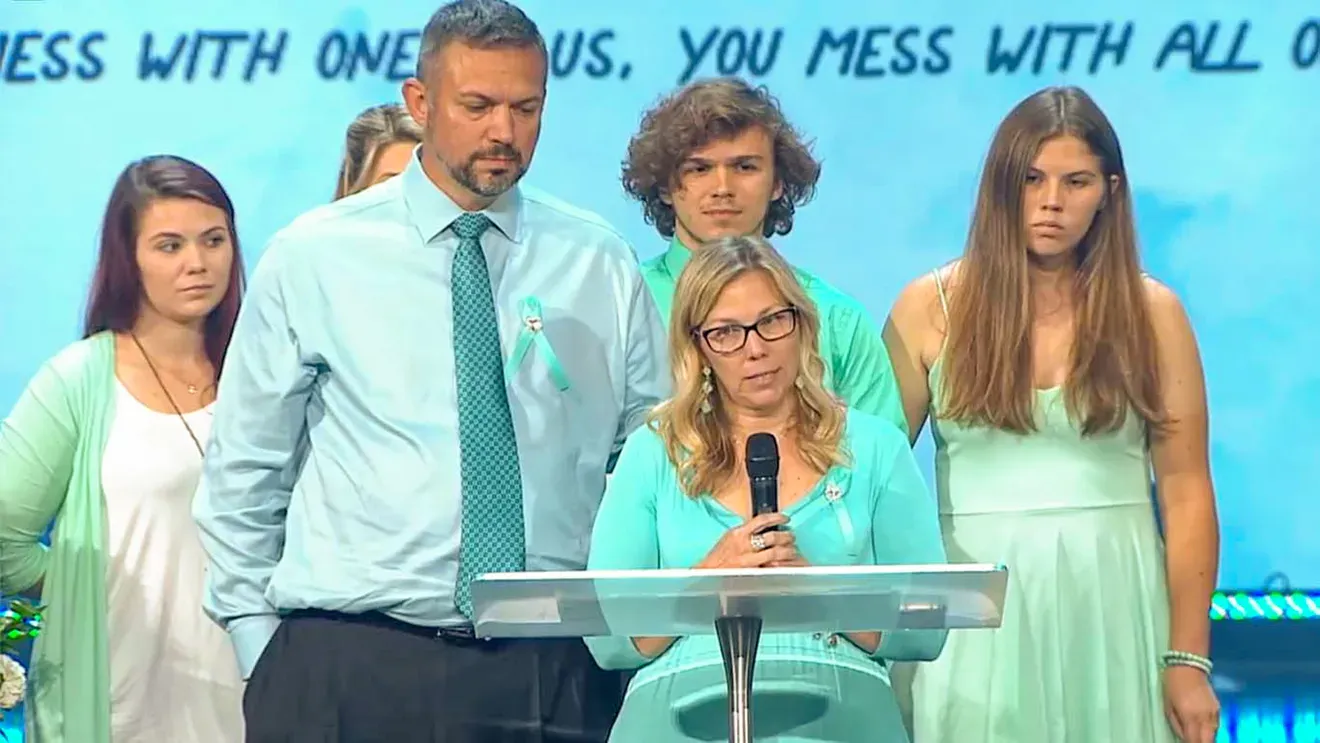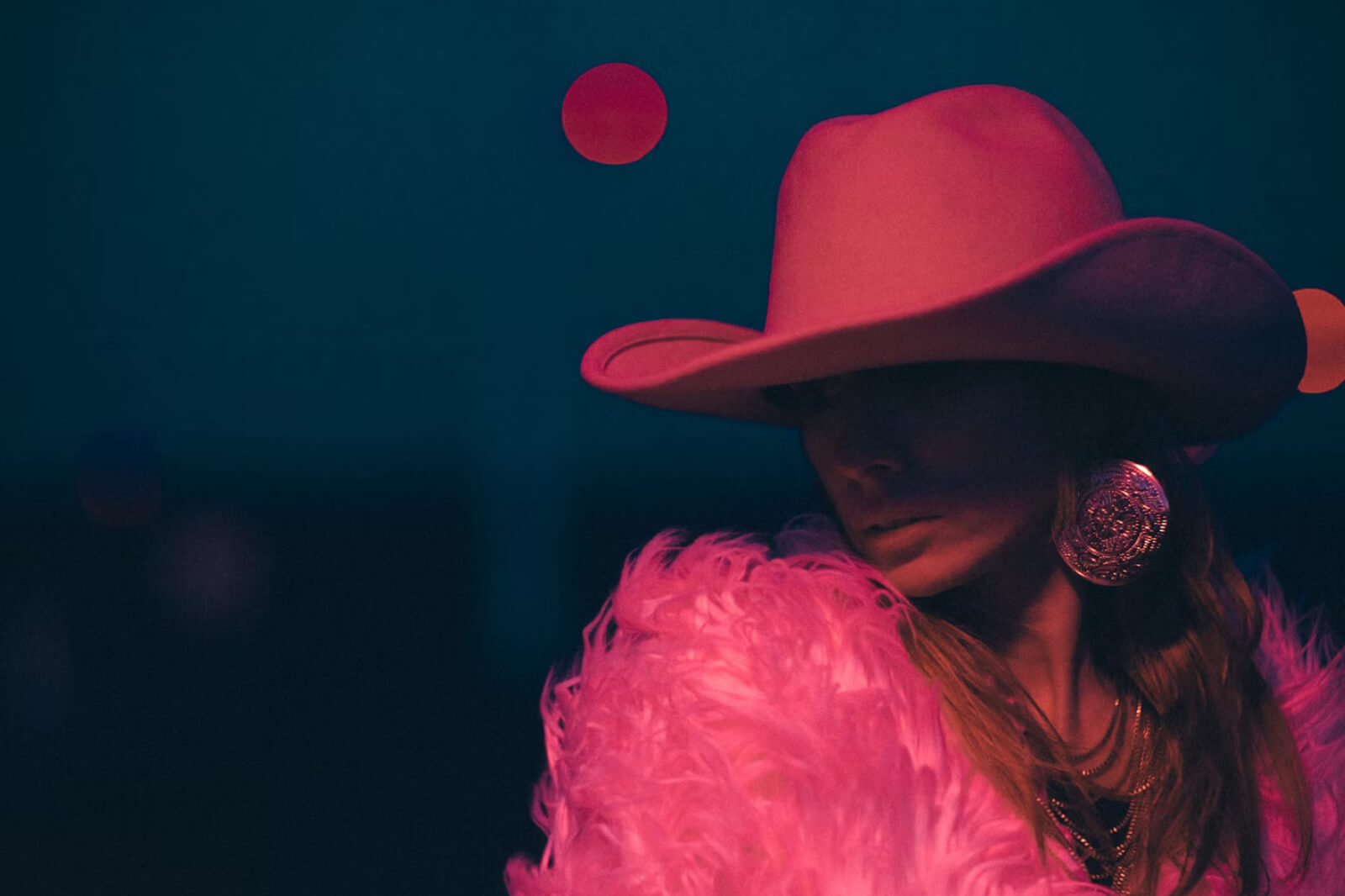
Tristyn Bailey's family at her memorial service
Photo from video
When 13-year old Tristyn Bailey was stabbed to death by a classmate in early May, her community mourned.
In St. Johns County, near Jacksonville Florida, the 13-year old cheerleader was initially reported missing and eventually found with 114 stab wounds, left mutilated in the woods. After a gruelling few weeks of search and investigation, the suspect, Aiden Fucci, a fellow classmate, has been charged with Bailey’s murder.
Her family released a statement to the public on Thursday May 27th, expressing their gratitude for the support they have received over the past month, saying thank you to “those in St. Johns that have helped from the Mother’s Day search, the vigils, remembrances and memorials.”
They continued, “With the press conference sharing details of this heinous crime, the caring and love shown from the people and businesses to raise up the memory of Tristyn and the resolve of our community serve as a beacon of light in the darkness … We do ask for your continued respect for our privacy as well as of Tristyn’s teammates and her school. As we move forward, we will seek to keep Tristyn’s memory alive and the spirit of the community.”
As the family and community reckon with the loss, some are using the press attention on the town and the case to get attention on social media.
After a Snapchat of Fucci in the back seat of a police cruiser circulated the internet, people have been trying to recreate the viral success.
The local sheriff’s department were so flooded with tips about the social media activity that they had to send out a statement, saying: “There are a number of accounts, however, that are using this case to try to gain fame and followers. Please know that these individuals had nothing to do with this incident.”
St. Johns County Sheriff’s Office Director Howard Cole added: “These kids have no idea the magnitude of their words and the things they post, and it’s frankly reprehensible.
Posting false information and posing as potential suspects, the attention-seeking posts on social media accounts were a surprise to most members of the community, which has banded together in the wake of the tragedy.
However, they feel like part of a growing desensitization to violence which has often manifested in a seemingly flippant attitude on social media. The murder of Tristyn Bailey is not the first to gain media attention, but the social media flurry is reminiscent of opportunism which has been prevalent around large-scale cases.
For example, in summer 2020 when the murder of Breonna Taylor became a major national subject, some used social media to grieve and advocate, but very soon the coverage was warped and “memeified” as people, including celebrities, started to use the caption “arrest the cops that killed Breonna Taylor” as a captions for irrelevant posts (including thirst trap-esque bikini posts) in a misguided way of branding themselves activists.
Many people have also spoken out about the opportunism of accounts which post brutal images of violence and people like Shaun King who profit off the violence perpetrated against others.
All this has culminated in a social media environment which rewards the kind of attention that morbid images and topics often receive. But our collective desensitization, and the social media exchange of clout for trauma, often hurts the victims and the communities affected by the violence we claim to be horrified by.
The social media fame the teenagers in St. Johns are seeking was actively distracting the investigation, while prolonging the pain for the grieving community. This town is a microcosm of the pretty bleak future where we’re headed, if a 13-year old girl’s murder can be exchanged for clout.














